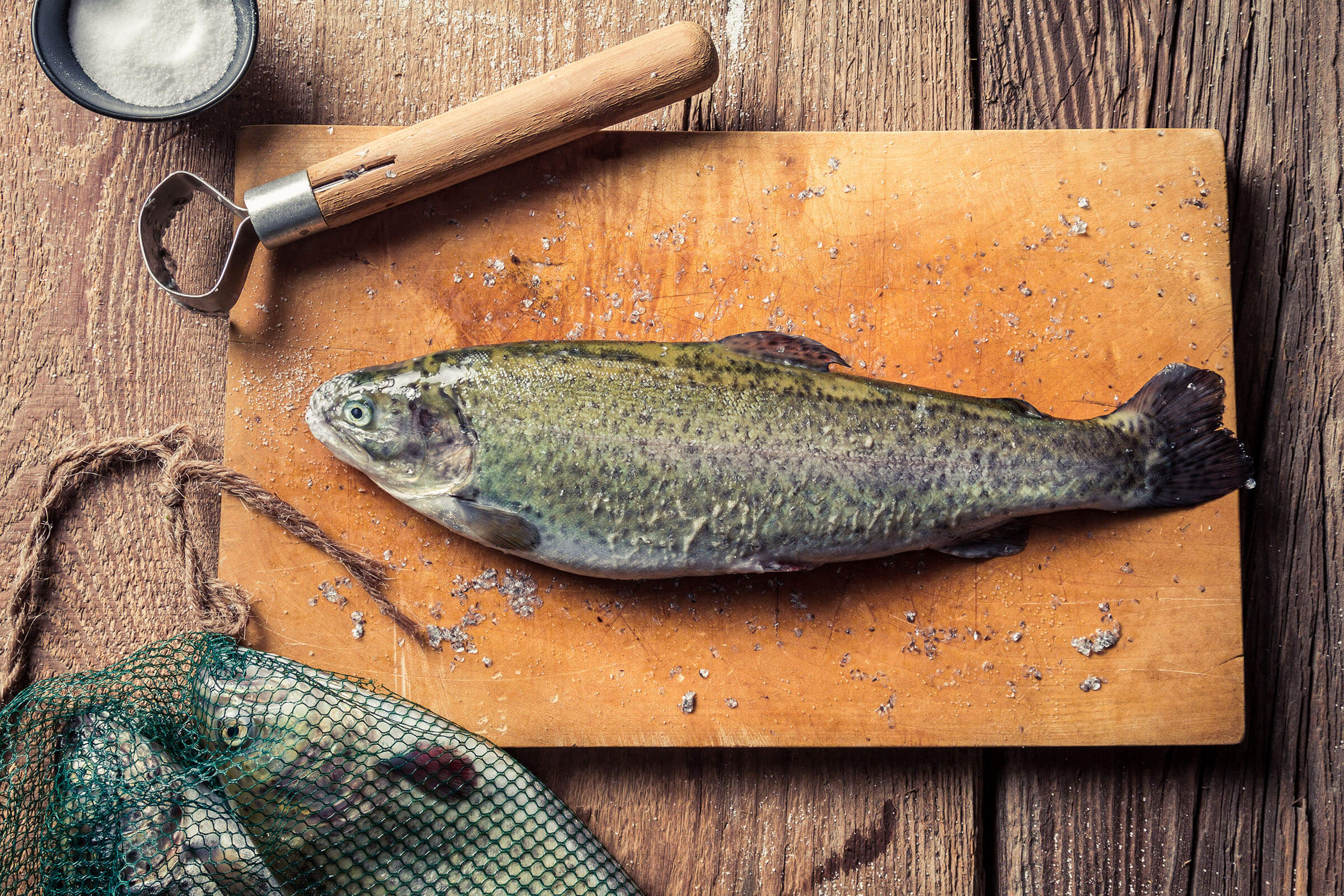Safe Fish Preparation: Most parasites specific to infecting fish will not infect or harm you including when you handle it or even if you eat it raw. However, with some species of parasites, there is a chance you can become infected and, therefore, you should always take precautions. It is recommended after catching and cleaning a fish, you wash your hands. All fish will be safe to eat when thoroughly cooked. Cook fish to at least 140°F (usually when the flesh becomes opaque and flaky). This way, if your fish is infected with a parasite, it will be killed, making the fish completely safe to eat.
Dogs should not lick or consume raw trout or salmon. Fish infected with the parasite Nanophyetus and having the bacteria Neorickettesia can infect dogs with Salmon Poisoning Disease. This can become fatal if untreated. Although we have not heard of any cases in Nevada, it has been found in California, Idaho, Oregon, and Washington. If your dog has eaten raw fish caught from a nearby lake or river and becomes ill (fever, vomiting, diarrhea, loss of appetite, or lethargic), bring it to your veterinarian and mention the fish.
Common parasites from fish in Nevada:
Endoparasites: There are several types of internal parasites that can occur in all fishes and ones that you may occasionally come across in Nevada. Flatworms such as flukes and tapeworms are usually never seen unless, at times when you clean your catch. They can be found within the gut and intestine, in or on organs, in the body cavity, or within the flesh. Fish are edible and washing up after cleaning your catch and cooking fish thoroughly is advisable.
Roundworms are another type of internal parasite, which occur in the body cavity or under the skin. Those in the body cavity can be readily seen near the stomach and intestines when cleaning your catch. Fish are edible and washing up after cleaning your catch and cooking fish thoroughly is advisable.
Ectoparasites: Flukes (flatworms) also can be found attached to fins, skin, gills, or inside the mouth. Fish are edible and washing up after cleaning your catch and cooking fish thoroughly is advisable.
Parasitic copepods (crustaceans) can attach to gills, mouth, or embed into the skin. A common parasite on fishes (from bass, bluegill, trout, minnows to many of the native fish species) in Nevada is Lernaea, or anchor worm. Anchor worms burrow head first through the skin into the flesh and have the tail end exposed causing visible red sores or pustules. They are easily plucked out or are usually removed when you skin the fish. Then cook your catch as usual.
Another common ectoparasite in warmer waters is Ich, causing white spot disease. It is a single-celled protozoan found in clumps causing multiple tiny, white spots over the skin or bumps under the skin of fish. Again, it is not harmful to humans, so clean and cook as usual, or skin the fish if you prefer.
Common in many of the cooler waters in Nevada are leeches, small-segmented worms that attach to the body of fish feeding on their blood. These can be easily removed and fish can be cleaned and cooked as usual.
Fuzzy patches of fungus can be found on the body and gills of fish generally where there was an injury such as a cut or scrape. In addition, a fish improperly handled causes removal of the protective mucus covering and eventually it may become infected with fungus. The fish is still edible, but you may want to skin it and remove the infected section, then cook the fish thoroughly.

